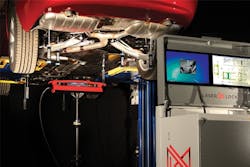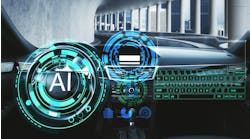In any given year, roughly 75 “significant” vehicle debuts or engineering changes hit the market, says I-CAR’s Jason Bartanen. It leaves shops in a perpetual state of playing catch-up, and it puts a premium on the industry’s hottest commodity today: data.
Repair data has become a crucial aspect of the three-pronged foundation of successful repairs, along with training and equipment. And data has become big business for industry equipment providers, so much so that companies with traditional backgrounds in pulling equipment have adopted data as their largest revenue source.
Chief Automotive Technologies is one of them. Roughly 25 percent of Chief’s worldwide sales come from its data segment, compared to 21 percent for its pulling equipment.
Richard Perry, global repair product manager for Chief, sums up the reasoning pretty simply: Without accurate repair data, you can’t make accurate repairs.
“Without being able to fully diagnose and find an issue with a vehicle after a collision, you can’t repair it properly,” Perry says. “You just can’t do it.”
As vehicles continue to progress, shops must turn to data to make sure they don’t get left behind.
Build vs. Repair Data
The standard go-to for shops should be OEM build data, and the repair information those automakers provide, Bartanen says.
That’s the minimum requirement, he says, and the folks at Chief suggest taking it a step further.
Build data from OEMs provides the original specs of a vehicle, as it would come off the assembly line, Perry says. It allows for a threshold on slight variances in the measurements, but it doesn’t necessarily provide a “real-world” benchmark for shops, he says. Put a vehicle on a lift to measure damage, he explains, and the front and rear of the vehicle can sag up to 3 inches. That sag, as slight as it may sound, can cause gross miscalculations in repairing the vehicle, especially when modern restraint systems and advanced safety features are timed in accordance to chain reactions in the vehicle that take place over milliseconds.
This is where repair data comes in. Chief has built its own database, measuring every available vehicle while on a lift, and adjusting the benchmark specs to reflect the conditions the average shop would see when measuring.
Chief has Data Resource Centers placed throughout the world to consistently gather new vehicle repair specs. The info is automatically updated and available through the company’s e-access platform. It gives proper benchmarks for the repair process, Perry says, and adds another level of accuracy for technicians.
“Correct vehicle dimensions—and repair methods—are imperative for ride quality, collision energy management, and for proper function of safety systems, including restraint systems and many of today’s other advanced safety systems such as the plethora of electronics associated with collision avoidance technologies,” Bartanen says.
Measure, Measure, Measure
But data is only half the solution for repairers looking to complete accurate and safe repairs.
“What’s important is that collision-damaged vehicles are repaired using a 3-D measuring system,” Bartanen says. “Today’s vehicles cannot be properly repaired without 3-D measuring.”
A collision can affect a vehicle’s structure in three directions: height, width and length. Because of that, Perry says, vehicles must be measured in all three directions; hence, the now common term 3-D measuring.
There are a handful of electronic measuring systems, such as those made by Car-O-Liner, Celette, Infinity and Chief. The devices provide an accurate baseline for the repair process, often finding hidden damage that would go unnoticed using traditional measuring gauges. And they can give instant feedback if used during the repair itself.
Using one is a must in today’s industry, as far too many repairs are being made incorrectly, says Mike Cranfill, Chief vice president of global collision and new business development. Chief reports show that just two out of every 10 vehicles in a shop are measured before work is begun, Cranfill says. And based on the company’s own analysis of typical vehicle damage, Cranfill says eight out of 10 vehicles need measuring to find hidden damage.
“You hear people say they rely on experience,” Cranfill says. “And that’s great. They might have 20 years of experience—but it’s likely the same year of knowledge 20 times.”
Collision repair is a data-driven industry, Cranfill says. It’s why Chief has shifted its focus in recent years, and it’s why others have done the same.
More than anything, though, it’s why shops need to do everything possible to ensure they repair based on accurate information. As Bartanen said, vehicles are changing rapidly, and shops need to be equipped.
“Outdated repair information, techniques and tools will not restore these vehicles to an optimum—or even safe—condition,” Bartanen says. “Repairers must be trained to understand how to handle these vehicles and materials, especially the joining methods required for complete, safe and quality collision repairs.”




